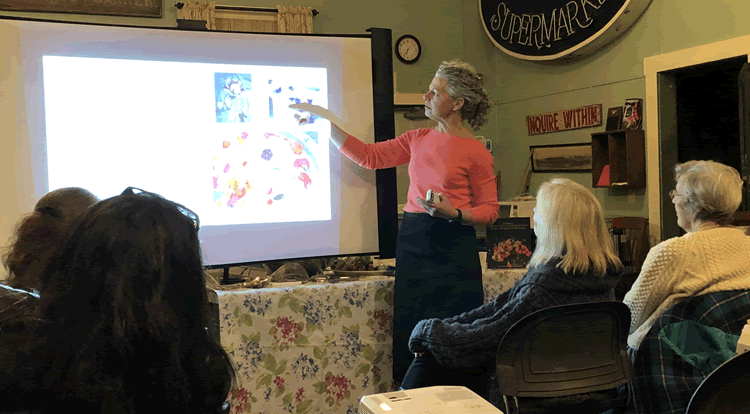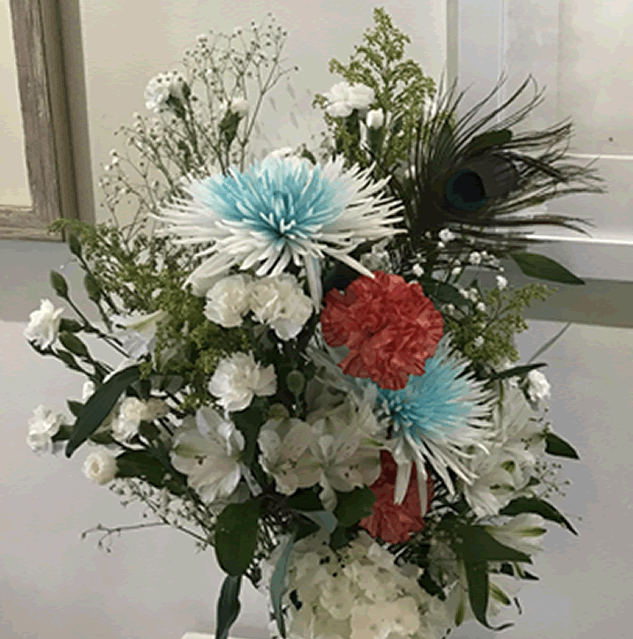The Hopkinton Garden Club is a welcoming and inclusive club. We do not and will not discriminate on the basis of race, color, religion (creed), gender, gender expression or identity, age, national origin (ancestry), disability, marital status, sexual orientation, military status or political affiliations in any of its activities or operations. Join us!



Planting Pansy's!


Hopkinton Garden Club’s 2024 Spring Plant Sale will take place on Saturday, May 11th between 8 a.m. and Noon on the Hopkinton Town Common.
Club members will be selling a wide variety of annuals and perennials, many grown in their own gardens, including flowers, vegetables, herbs, native plants and hanging baskets. Cash, check and credit card payments will be accepted.
You will also be able to "Ask a Master Gardener" your gardening questions, learn more about native plants from Trevor Smith of Weston Nurseries, have your garden soil pH tested, and ask the Hopkinton Sustainable Green Committee about gardening sustainably.
The Spring Plant Sale is the Hopkinton Garden Club’s major annual fundraiser supporting the Club’s town beautification efforts, educational and community programs and college scholarship fund.
In the event of extremely heavy rain only, the Rain Date will be Sunday, May 12, 9:00 a.m. to Noon (updates will be provided on the club website and social media).
Hopkinton Garden Club is a 501c(3) non-profit. Learn more about club programs at: www.hopkintongardenclub.org, Facebook (HopkintonGardenClub) and Instagram (@hopkintongardenclub).
IMPORTANT! Jumping Worm Precautions

April
Arrangements for Our Veterans!
Spring is coming! These beautiful arrangements provide some spring cheer for those attending the Veteran’s Breakfast at the Hopkinton Senior Center. A lovely volunteer effort by our Club volunteers Nancy, Ann, Judy, Merylyn, and Sue. Each month, September through June, club members provide floral arrangements to decorate the tables at the Senior Center for their Veteran's breakfast.

The Pansies are Planted on the Town Common!!!
The pansies are planted on the Town Common, thanks to great crews that planted on Friday (had to clear snow! ❄️ 😳) and Sunday! Gearing up for Marathon Monday/the 100th Marathon start in Hopkinton! BTW: it’s Hopkinton Garden Club’s 100th year, too! Extra thanks to the Beautification Chairs: Judy, Mary, & Merylyn!

Meet our Runner!
Please consider a donation to help fund Civic Beautification, Educational Programs, Scholarships, and more...
I am so excited and honored to be fundraising for and representing the Hopkinton Garden Club at the Boston Marathon in April 2024! The mission of the Hopkinton Garden Club is to promote the teaching and advancement of gardening, horticulture, and floral design; to develop an interest and encourage participation in the town’s beautification; and to foster sustainable gardening and conservation efforts. For those of you who know me, I am passionate about gardening with my three young girls and also studied sustainability in college, so the organization's mission and their deep involvement in our town of Hopkinton truly resonates with me. They're an impressive and engaged organization that contributes to the both the environment of the town, but, even more importantly, to the people via various events. THANK you tremendously for any donations. I am very appreciative of your support for HGC and looking forward to training for the marathon!
A Huge Thank You to Our 2024 Business Sponsors
Our Business Sponsors share our goal of beautifying Hopkinton for the betterment of our community. We are extremely grateful to each organization who continues to support our work through their generous contributions. We also want to express our deep appreciation to our Department of Public Works for providing a weekly watering for our planters and sites. This help is invaluable to keeping our plants looking their best! Please show everyone your support and recognize their caring contribution to our town!
Planter Sponsors:
-
Kathy Williamson
-
Unibank, Hopkinton Branch
Native Plants
Native plants in home gardens are essential for providing pollinators safe habitat in which they can thrive. Climate change, overbuilding, invasive species and other factors have destroyed large areas previously home to our insect and bird populations. With so much land being "chopped up", putting native plants in your garden will add to those from your neighbors’ gardens creating larger spaces for pollinators to call home. Pollinators, who work hard to maintain the ecological systems we depend on (like food growth!), need your help! Here are links to articles, webinars and websites with information on native plants and why they're so important to pollinators, and to us. Articles: How and Why to Use Native Plants Choosing the Right Native Plants Webinars: Adventures with Oddities: Strange and Noteworthy Natives (courtesy of the Ecological Landscaping Alliance) with Dan Jaffe (formerly of the Native Plant Trust) Landscaping with a Purpose, What's Diversity Got to Do with It? with Randi Eckel Websites: Native Plant Trust Grow Native Massachusetts Ecological Landscape Alliance Lady Bird Johnson Wildflower Center (Native plants by state)




Erigeron annuus, known as Annual fleabane or Daisy fleabane, is extremely common— and can quickly seed into open areas, particularly after they have been disturbed. It is a valuable source of nectar and pollen to small native bees, flies, and other insects; a larval host plant for 20 species of caterpillars; and prolific enough to compete with non-native weeds that don’t have much to offer ecologically-speaking. (Courtesy of Grow Native Massachusetts)
Co-founded by Doug Tallamey, Homegrown National Park® is a grassroots call-to-action to regenerate biodiversity and ecosystem function by planting native plants and creating new ecological networks.
“Our National Parks, no matter how grand in scale are too small and separated from one another to preserve species to the levels needed. Thus, the concept for Homegrown National Park, a bottom-up call-to-action to restore habitat where we live and work, and to a lesser extent where we farm and graze, extending national parks to our yards and communities.” The goal is to get to 20 million acres of native planting in the U.S
Listen to a short talk by Doug Tallamy highlighting why your help is needed.
Want to know more? Read about keystone plant species that support the most pollinators!
Invasives!
Invasive plants - What are they? Non-native species that have spread into native or minimally managed plant systems in Massachusetts. These plants cause economic or environmental harm by developing self-sustaining populations and becoming dominant and/or disruptive to those systems. As defined here, “species” includes all synonyms, subspecies, varieties, forms, and cultivars of that species unless proven otherwise by a process of scientific evaluation. (Massachusetts Invasive Plants Advisory Group)
General Resources:
Plants!
Invasive Plants in Hopkinton
Numerous stands of invasive plants have been identified in Hopkinton by our "Open Space Preservation Committee". Japanese knotweed, bittersweet, glossy buckthorn and barberry have been found in profusion in various locations. Ed Harrow, chair of the Open Space Preservation Committee, has led efforts to identify, and remove invasive plants in some areas. Read what he had to say when interviewed by the Hopkinton Independent in 2022.
https://hopkintonindependent.com/invasive-knotweed-plants-roots-in-hopkinton/
Insects!
Invasive Insects in Massachusetts!
The Spotted Lanternfly Arrives in Massachusetts!!
The MA Department of Agricultural Resources (MDAR) announced on 9/28/21 that a small, established, and breeding population of the invasive spotted lanternfly (Lycorma delicatula) was detected in Worcester County, in the city of Fitchburg. This finding was confirmed by state officials.





